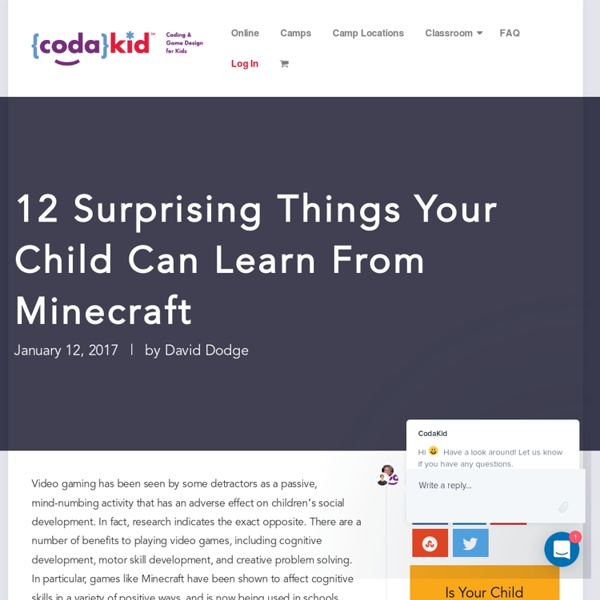Use Classic Games to Ignite Student Engagement
As a new middle school media specialist in a school that serves students in grades 5 through 8, I spent most of last year collaborating with Sara, our school's instructional technology facilitator. We focused on converting our media center from a traditional library model into a learning commons model. This model updates the library from a storehouse of information to a place where students can interact with information, learn 21st-century skills, and create content and materials in a whole new way. Our language arts, social studies, and science teachers were quick to see the value in our new learning commons. But many math teachers didn't see the relevance to their subject area. After I regularly pursued a particularly skeptical math teacher, he finally agreed to give our learning commons a whirl.
Designing a Game Based Curriculum in Minecraft Infographic
Gamification Infographics Designing a Game Based Curriculum in Minecraft Infographic Designing a Game Based Curriculum in Minecraft Infographic One of the most challenging aspects for any new Minecraft teacher will of course be learning to design their lessons in a way that captivates their students, develops skills, and harnesses the full power of a game that their students are likely already experts in. The Designing a Game Based Curriculum in Minecraft Infographic will help you maximize the success of your Educational Minecraft lessons. 1.
How virtual reality technology is changing the way students learn
For many years, schools and universities have had to change the way they work and teach in order to fit in with technology. Software like PowerPoint, for example, which has long been used as an education tool, wasn’t designed for education. Nonetheless, it has been a staple tool in education settings, used as a way to present information in template, bite-size formats. But this isn’t always a good thing. The use of digital technologies sees some teachers and students presenting information using templates, which means much of the individual character of teachers’ practices can be lost. Research shows that software such as PowerPoint can homogenise and sanitise the way teachers present information to their students.
Where History Comes Alive: Augmented Reality in Museums
“Museums will need to do everything they can to engage with their public, through their displays, education and outreach programs, and by being as open as possible to what their audience wants. Museums are much more than repositories of objects; they are meeting places for people and ideas. Their future depends on remaining a dynamic part of the public realm.”
MinecraftEdu: The Craft Of Digital Citizens
MinecraftEdu: The Craft Of Digital Citizens by TeachThought Staff Originally released in 2011, Minecraft quickly found a place in classrooms around the world. It was dead simple to use–at its simplest you stack digital blocks, and its most complex you can recreate entire cities, create video games within the video game, (roughly) functioning ecosystems, and more.
3 Ways to Use Game-Based Learning
What exactly is game-based learning, anyway? Is it a roomful of children playing video games? Is it students designing games? Or is it both of these?
Digital Technologies Hub
Level F - 2: Follow, describe and represent a sequence of steps and decisions (algorithims) needed to solve simple problems (ACTDIP004) Level 3 - 4:
Play as an approach – It Happened in the Library
Play is not so much an activity as it is an approach. It is a very particular, instinctual, joyous approach towards interacting with our environment and each other. It is not something that only children do. Our play oriented activities may change as we progress through life, but the instinct towards play as a style of engagement with our world and each other, remains. Sure… some of us may have lost the spontaneity we had as children. But perhaps all we need is a nudge, an idea, or an irresistible invitation.
Overcoming 10 Common Obstacles of Game-Based Teaching
Game-based teaching is an exciting adventure for any teacher to embark on with their students. It excites learners and connects them to the curriculum in ways they can appreciate and be attentive to. Unfortunately, like many instructional approaches with a strong technology foundation, there can be difficulties.
Learn to Play: Minecraft in the classroom
Imagine being eight years old today. You pack your bag, hop on a bus, act like your crush has cooties and go through lessons on history, English, maths, science, and... Minecraft?



